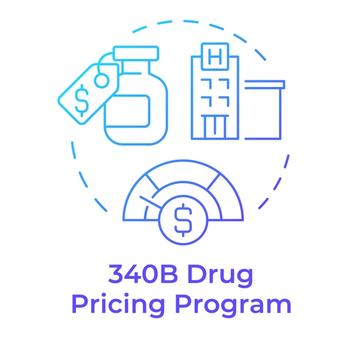
Study: Lower Rebates, and Lower Prices, Lead to Lower Patient Costs
In a real-world example, investigators found that lowered pricing of prescription drugs results in lower patient out-of-pocket costs, particularly for those patients with coinsurance.
Reductions in the list price of drugs —and reductions in rebates — have the potential to decrease out-of-pocket costs for patients, according to a study
“Our retrospective analysis demonstrates challenges with the gross to net bubble and ensuring that patients realize the potential benefits of rebates and discounts,” one the study authors, Leah L. Zullig, Ph.D., told Formulary Watch. “We found that reducing list prices to approximate net prices (as a proxy for reducing rebates) resulted in lower patient out-of-pocket costs, particularly for those patients with coinsurance. While not part of our analysis, this is also highlighted with the recent Humira biosimilar pricing announcement.”
Zullig, a professor in the department of Population Health Sciences at Duke University Medical Center, is referring to the recent launch of Amjevita (adalimumab-atto), Amgen’s biosimilar of AbbVie’s arthritis drug Humira. It is launching with a two-tier pricing program: the first is 5% below the current Humira price and the second is 55% below the current Humira list price. Humira’s list price is $6,922 for a four-week supply — almost $90,000 annually.
Investigators in this study — led by William Bruce Wong, who is affiliated with Genentech, which funded the study — examined two drug classes. They assessed PCSK9is to treat patients with high cholesterol as well as medications to treat hepatitis C. The cholesterol medications investigators assessed were Amgen’s Repatha (evolocumab) and Regeneron’s Praluent (alirocumab). The hepatitis C medications included Epclusa (velpatasvir/sofosbuvir) and Harvoni (ledipasvir/sofosbuvir), both of which were developed by Gilead.
These four drugs were chosen because of price reductions that were put in place prior to patent expirations, which investigators said provide an opportunity to assess the impact on patient out-of-pocket costs. In these examples, list prices of the new versions of the products were set at prices approaching those of payers because of rebates and discounts (what investigators are calling the net price), and as a result, rebates were reduced. Additionally, Gilead had issued authorized generics for the hepatitis c medications, and these were offered at a lower price alongside the initial branded therapies.
Investigators used IQVIA PharMetrics Plus adjudicated medical and pharmacy claims for commercially insured patients. For both classes of medications, the original and lower-priced versions were compared. Adherence was estimated based on proportion of days covered for the cholesterol medications and receipt of full treatment regimen for the hepatitis C medications.
In total, 10,640 patients were included who received one of the four drugs being assessed.
Investigators found that after list price reductions, mean payer drug costs decreased by more than 60%, while patient out-of-pocket cost reductions ranged from 14% to 55% (Repatha: 55%; Praluent: 51%; Epclusa: 30%; Harvoni: 14%). For the cholesterol medications, this amounted to about $1,000 per prescription, and between $17,000 to $19,000 per prescription for hepatitis C medications.
They found that copayments were the high contributor to out-of-pocket costs for most patients, and for these patients, the absolute differences in costs between the original and lower price was less than $65. But for the 10% of patients where coinsurance was the highest contributor to out-of-pocket costs, the difference between the original price and lowered price was between $135 to $379.
In the case of the hepatitis C therapies, Gilead offer insurers a choice of the authorized generics with a lower price or the branded. Investigators said some payers transitioned patients to the new lower priced versions others continued their patients on the existing higher priced version. Investigators suggested that large rebates for the higher priced products may have disincentivized payers to switch. “This slow transition to the new lower price versions may have resulted in potentially avoidable higher OOP costs for patients who remained on the higher price versions during this period,” they wrote.
Lowering rebates may provide additional savings to patients, particularly for individuals with coinsurance. “Our finding are consistent with these, in that introducing lower list price versions similar to that of the net prices of the original product resulted in lower patient OOP costs in a largely commercially insured population,” they wrote.
One limitations of this research is that limited information was available on actual rebate amounts for individual payers. Investigators also did not have access to formulary tier information, which could explain differences between the out-of-pocket costs of the cholesterol and hepatitis C drugs.
Newsletter
Get the latest industry news, event updates, and more from Managed healthcare Executive.




